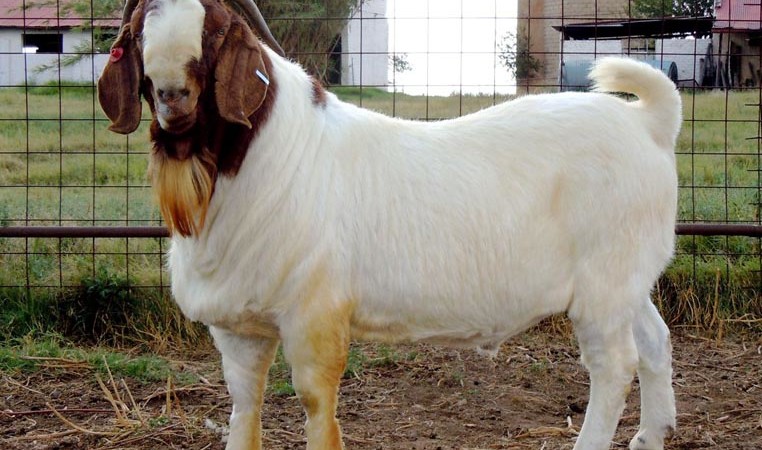

There are many goat breeds in Uganda including Mubende, Savannah, Boer, Saanen and Toggenburg in Uganda with each reared for a different purpose.
Dr Nicholas Ssebunya, a veterinary officer and farm manager at Kamenyamiggo Datic in Masaka District, reveals that the market trends in Uganda and abroad dictate that the Boer, famed for its meat purpose, must be the on demand breed in Uganda.
Among other advantages, the animal expert cites the fat growth of Boers and their resilience to weather patterns even when crossbred with locals.
Other advantages include eating less, having delicious meat, skin used in leather production, horns used for making buttons, dung being good for farm manure and drought resistant.
Managing diseases
According to Dr Ssebunya, Boers, like the other types, face diseases that can be treated and at the same time prevented by keen farmers.
“Goats get diarrhoea if they are not dewormed after three months and also get respiratory complications like flu and cough if their houses lack proper ventilation and are not cleaned everyday,” Dr Ssebunya advised.
He says goats risk getting the contagious ecyma commonly known as ‘obumwamwa’ or orf when the virus gets to the mouth if the goat is taken early to graze on free range or tethering.
Dr Ssebunya also noted that Brucellosis disease that leads to abortion and impotence is becoming common mainly through mating but he adds that there are vaccines for this.
Feeding
Goats are browsers and prefer shrubs; hence they eat what other domestic animals cannot utilise, even when they are raised in the same farm.
All goats require proteins, carbohydrates, vitamins, mineral saltlicks and water. These are needed for growth, conceiving, milk production and fattening.
About 74 per cent of goats feeding is from browse. About 26 per cent of the feed is from plants that cannot be eaten by other domestic animals.
During drought, goats can eat dry leaves. Goats can be tethered around homes, browse on free range.
The right breeds
The Boer goats come from South Africa and they are mainly for meat. Like with the other types, look at the size, scouting its producing patterns, and do not buy from the market because farmers tend to sell problematic breeds.
While buying a male Boer, ensure it has potential to mount females. The breed type should not be too old.
Goat rearing strategy
According to Dr Ssebunya, the farmer should ensure that the female goat produces thrice in two years. This he adds, requires good record keeping and selection.
Ensure that 50 per cent of the females produce twins or triplets. This also requires intensive breed selection.
The Boer goats reach sexual maturity at nine to 12 months and should be fast growing breeds. He advises that stunted goats in the herd should be culled immediately (sold or slaughtered).
Market
Currently, a mature two-year-old buck weighing about 100 kilogrammes may fetch Shs600,000 while young stock of five to 12 months fetches between Shs300,000 and Shs350,000 depending on the sex.
The major markets include farmers who want to start Boer goat farming or farmers with indigenous breeds and wants to do crossbreeding to improve their qualities. The other buyers are those who want the goats for meat.
It is also suitable for the export meat market because of its fast growth and the reduced rearing time.
Male breed
It has to have big, same size testes. The testes should be seen from behind, good straight legs, wide chest and should be aggressive in character.
The meat breed should weigh more than 30 kilogrammes, have good skin with smoothly slanted hairs.
It should eat grass and drink water well. Lastly, it should have no froth in the mouth, anus, mouth and urinal area.
Crossbreeding
The characteristic head colour is always expressed when the Boer is crossbred with other goats. It is, therefore, easy for goat buyers to identify goat cross-breeds with Boer genes.
Such crosses normally fetch higher prices than other goats as they tend to grow faster and bigger than the local goats.
About the goats
The Boer goat is characterised by a white body with a red head and some red colour on at least some part of the neck. The red colour may look brown in some individual animals.
The goats have large drooping ears and some people tend to mistake them for sheep due to the shape of the muzzle.
They are stocky with short legs and compact blocky body that allows them to pack in a large quantity of meat.
The goats are very hardy and can adopt to all types of weather and climate. They normally feed on leaves of trees, corns, green grasses and some other supplementary feeds. Because they require less food, they are easy to maintain.
 Contact Jaguza Support
Contact Jaguza Support